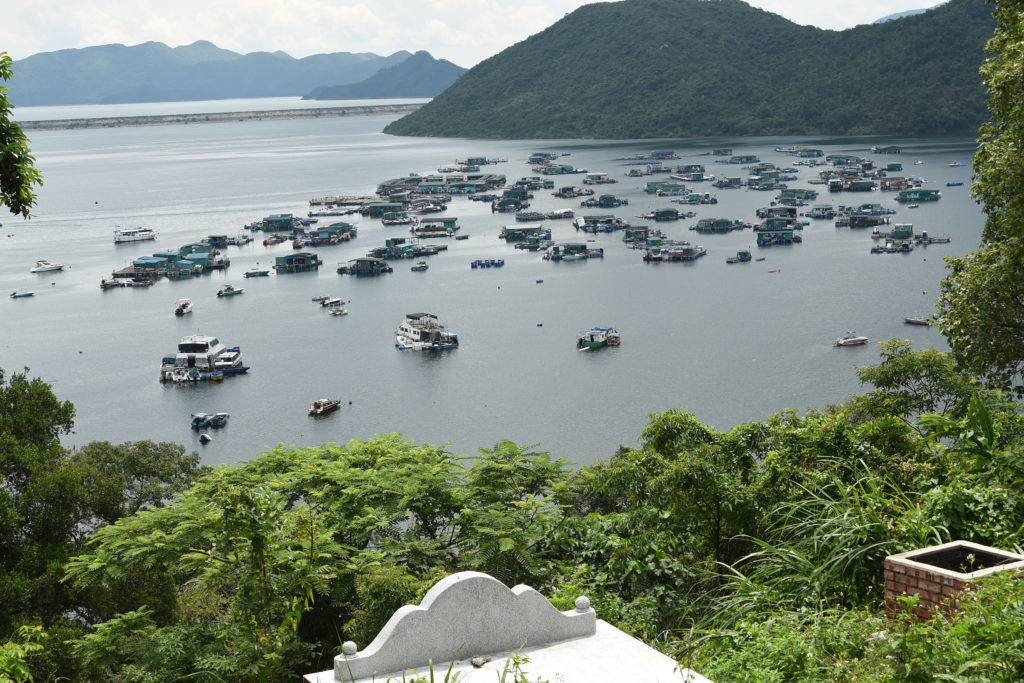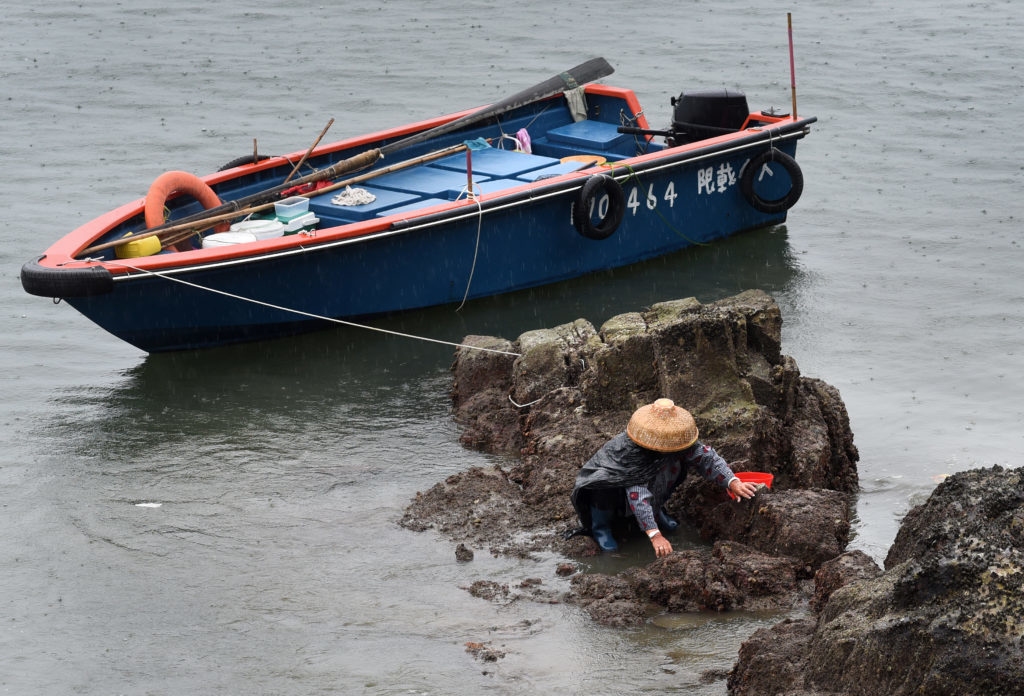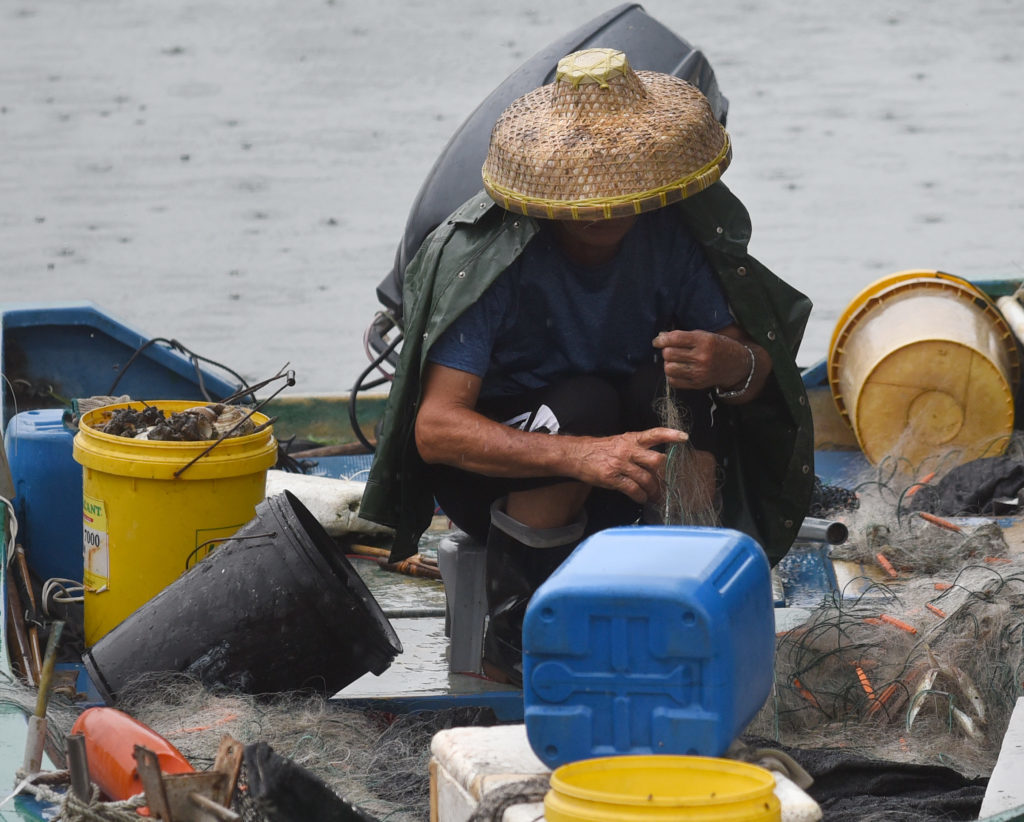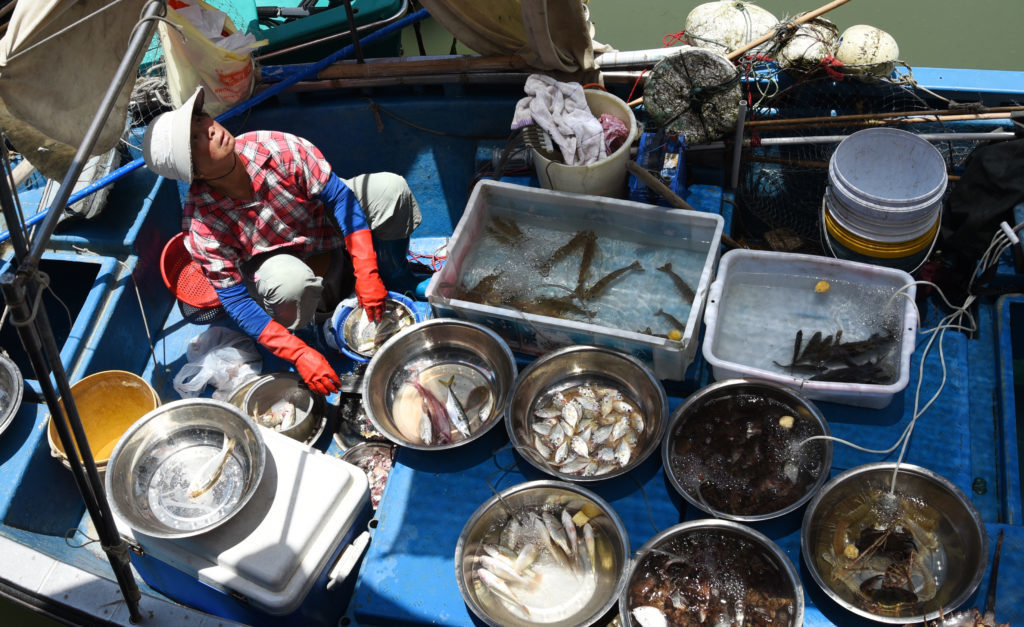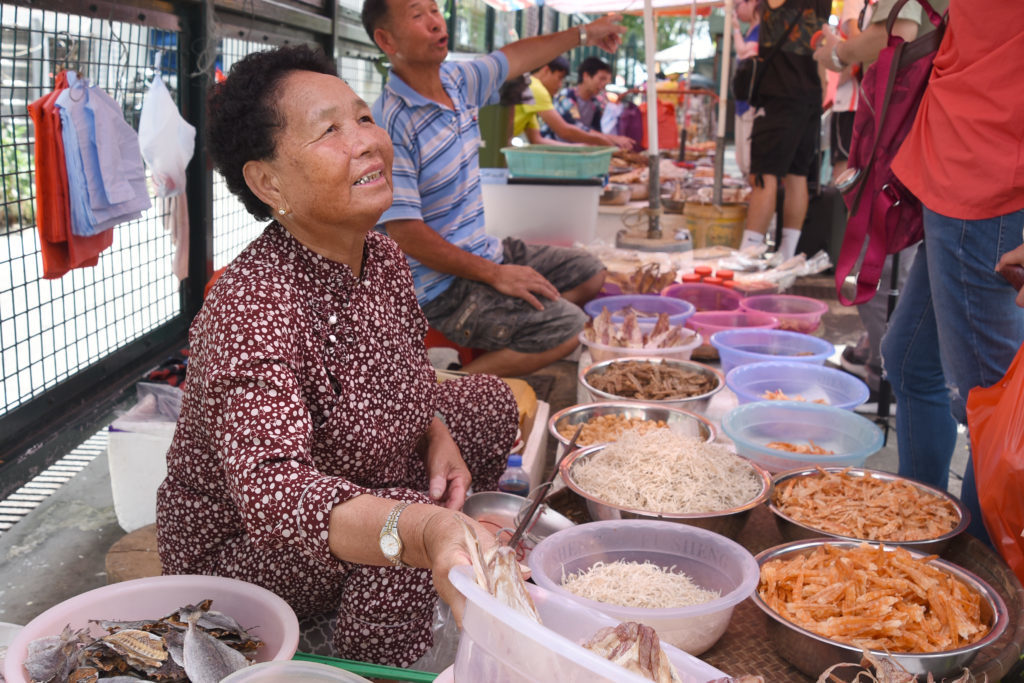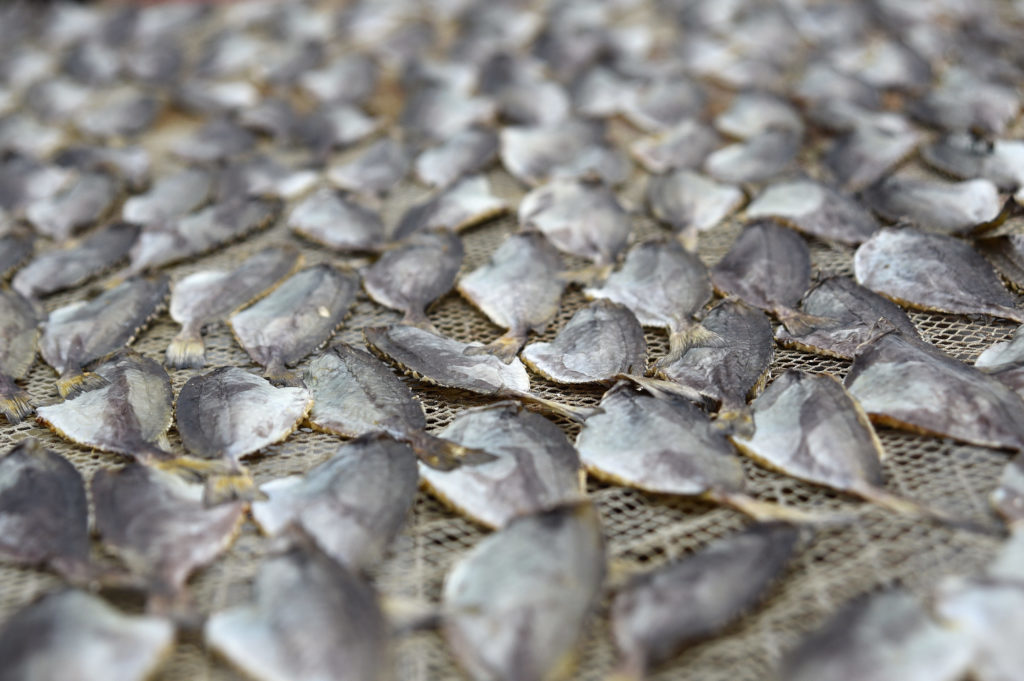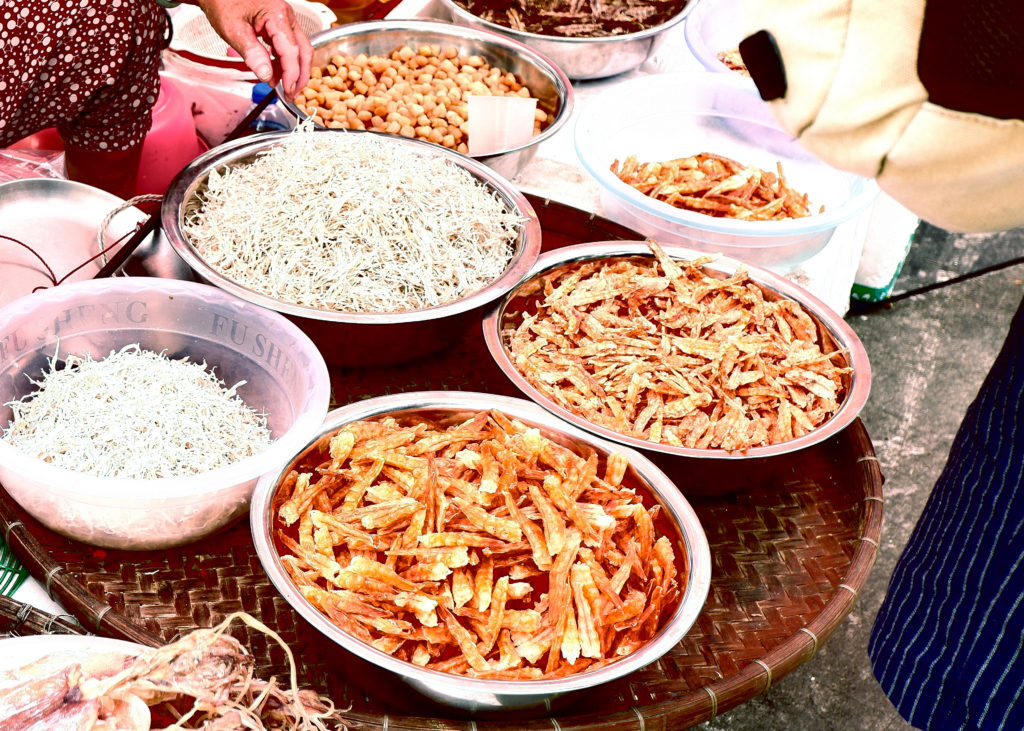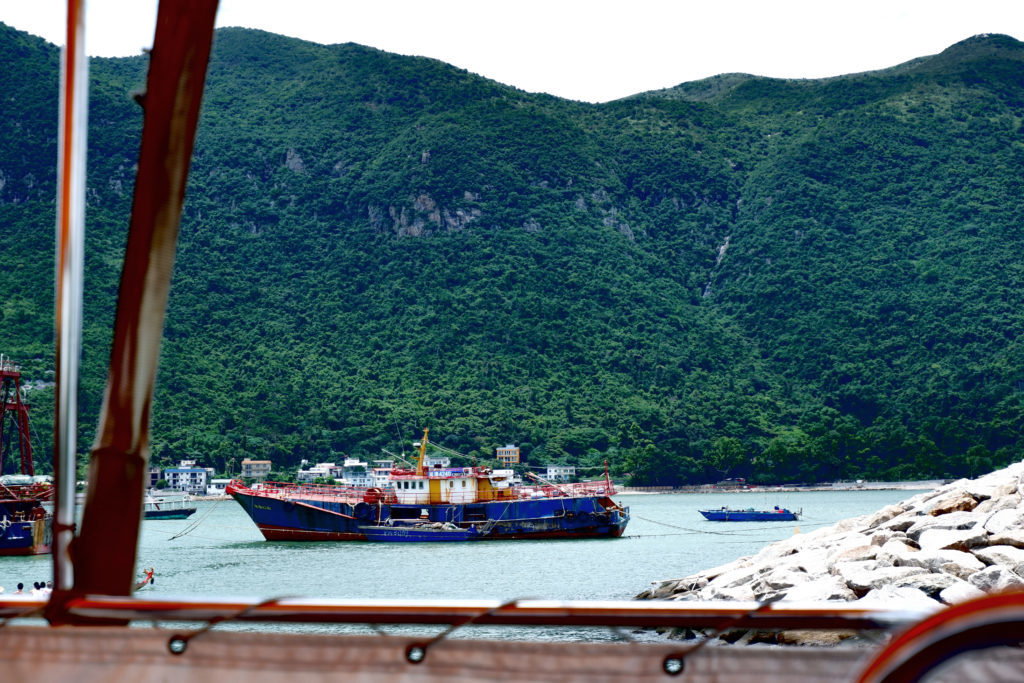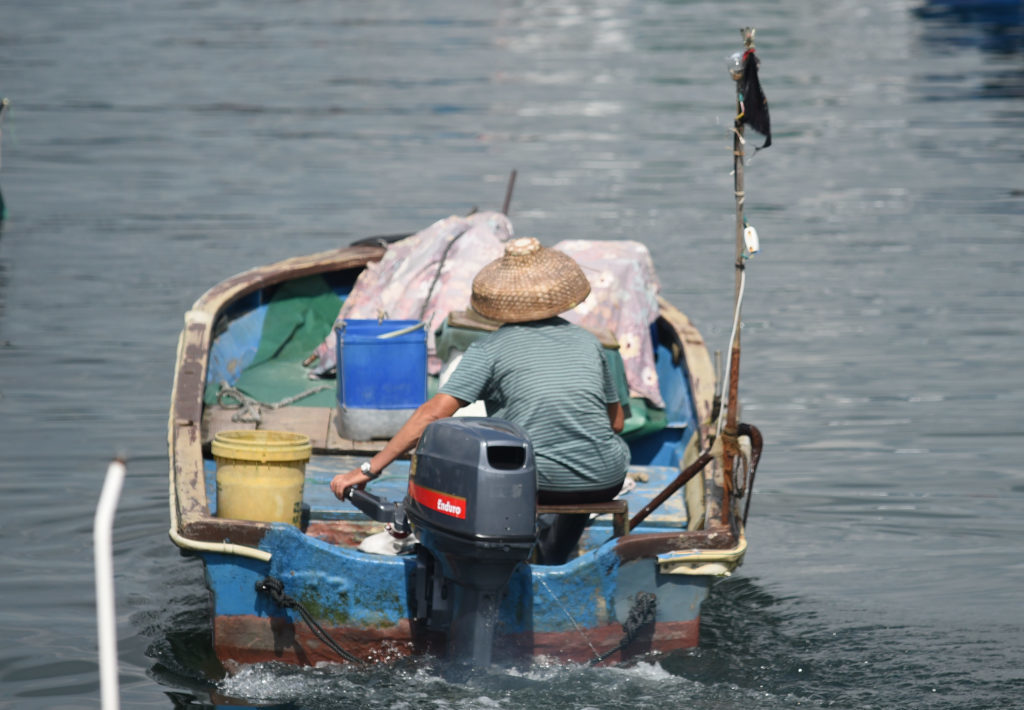Story and multimedia by Kiernan Green, Ivonne Flores Kauffman, Ashley Fraser and Karen Longwell
On the bustling streets of Cheung Chau, tourist shops fight for space with seafood restaurants.
The island, 40-minutes by ferry from Hong Kong’s Central Station, shows signs of its traditional fishing village past, which is now fading. Making a living from the sea is no longer viable for most fisherman across Hong Kong and as that way of life ends so too does the village.
Along the seaside walk, a man worked on a dragon boat. The fisherman who used his family name, Lam, is about 60 years old, and an indigenous resident of the island. He made his living from fishing the waters that surround Cheung Chau, he said; a life’s work shared by most of his generation and decades of generations before him. However, he said he will be the last to bet their income solely on the fishing industry.
“The next generation has moved to the city,” Lam said through a translator.
Fisherman want to continue their work, but it is no longer economically viable for small-scale operators, Lam said.
“At some point, they can’t even cover the petrol so they have to stop,” he added.
This is the case for all fishermen like Lam, and for all fishing villages like Cheung Chau, as Hong Kong’s fishing industry fades from its historical prominence.
Prior to the British occupation in 1842, Hong Kong was a fishing village of little significance. The proximity to the ocean and the islands’ towering hills meant fishing surpassed agriculture in importance. The culture of native Hong Kongers grew around fishing and the sea, as Hong Kong’s economy and influence in the region expanded around British control. This growth capped with the post-Second World War boom, which provided a strong economy, larger families, and a golden period for Hong Kong’s fishermen. Between 1950 and 1964, fishing employed some 80,000 people.
The industry’s decline began in the 70s, and was unstoppable by the 90s, as Hong Kong’s economic growth outpaced its fishing tradition, said Wai-King Wong, a lifelong resident of Tai O, an iconic fishing village on Hong Kong’s largest island, Lantau.
“Now, the economy in Tai O, there’s no role for fishing,” Wong said through a translator. “They’re competing for fish, as there is almost 0 per cent for fishermen in Tai O.”
Reasons for the loss of the fishing industry in Tai O, Cheung Chau, and others like it is years of overfishing; the development more efficient fishing practises meant less fish stock with each year, and less income, Wong said. Without a secure source of income, the cost of running a boat and yearly maintenance is up to $1 million and has become unfeasible.
As Hong Kong became focused on global finance in the 80s and 90s, so did its population. Labour jobs in the city required for Hong Kong’s burgeoning development – such as construction or dock work – became far more profitable than anything pulled from the ocean, Wong said. The result was a mass migration of outer island families to the city centre. As residents moved to urban areas, Wong started to collect the items that residents of these villages left behind.
In 2001, Wong curated Tai O’s Culture Workshop, a collection in a small museum, and workshops, to preserve Tai O’s culture and lifestyle. However, in June 2019, the workshop was permanently closed. The 100-year-old building is in need of repair. Wong has transferred the remaining items in the museum to a local school. Although industry changes, Wong said that the relationship between a person and their history or culture is one that should never have to change. She hopes students will understand their culture.
The Hong Kong government aims to preserve the fishing culture, said Wing-Kwong Yau, who joined a committee to manage the Sustainable Fisheries Development Fund of HK$500 million in 2014.
Yau grew up in a Hakka village in Tolo Harbour in the New Territories. His father was a
fisherman and his mother worked in farming. He still speaks the Hakka dialect and values the
culture.
“I am still able to sing some of the songs I learned from my parents,” Yau said.
The $500 million is being used to improve fishing techniques and income, and training for culturally related jobs such as educational tours, Yau said. He added that there is more that can be done to preserve the region’s cultural heritage.
“The environmental damage in Hong Kong, it’s done, it’s permanent.”
“Fishermen [are a] really important part of Hong Kong culture and we should really keep it as a
heritage and put more effort into preserving it and passing it on,” Yau said.
Still, the government’s efforts cannot stop the decline of Hong Kong’s fishing industry, said Wong.
“The environmental damage in Hong Kong, it’s done, it’s permanent,” she said.
The fish are gone along with the secure source of income they once provided. With the rise in education throughout Hong Kong, post-secondary graduates are unlikely to take on a labour job after their studies, she said.
Wong said it is unlikely the industry will be preserved. Instead, she hopes the culture of her fishing community can be passed onto the next generation. Hong Kong may develop as a city to look like “everywhere else,” but the surrounding fishing villages can provide a culture that is inherently unlike anything else on the planet, and serve their communities and visitors in that respect, she said.
The relationship between oneself and their culture is so important Wong said. The next generations preservation of that relationship is vital for the preservation of Tai O’s community and other fishing communities throughout Hong Kong.

